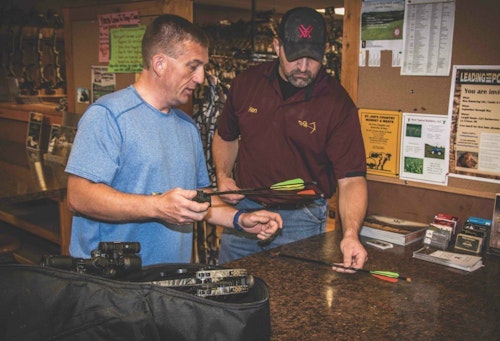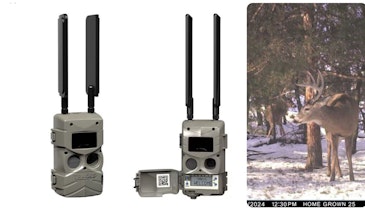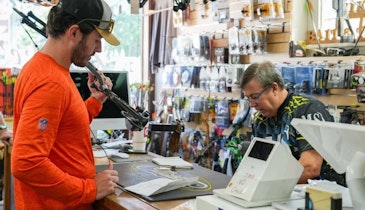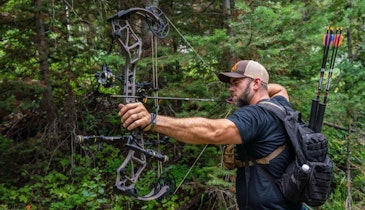Business owners must understand that different people expect different things from each shopping experience. In fact, each generation has its own social, political and cultural traits that influence their buying habits and product preferences. Knowing and understanding generational differences can help pro-shop owners shape sales strategies and boost income.
That’s why the ATA set out in 2017 to help its members by learning more about the bowhunting market. That includes comparing opinions on bowhunting with other outdoor activities, and bowhunters’ use and purchasing behaviors for bows and archery equipment.
The outcome was a 253-page report called “Bowhunting in the United States: A Market Study.” ATA worked with the Responsive Management research firm to survey 2,632 bowhunters in 10 states. Responsive Management then analyzed the data using multiple variables, such as generational differences.
The study divided participants into three age groups: baby boomers (50 and older), Gen X-ers (ages 35 to 49) and millennials (ages 18 to 34). The study found that about a third of bowhunters increased their participation over the previous five years. Of all age groups, millennials generated the highest percentage increase.
Over half of the respondents said their participation increased. The study’s revelations about bow preferences and buying habits for each generation are intriguing. ATA members should find the entire research relevant and interesting.
Bow Preferences
All age groups bought their first bow by age 20, but a baby boomer’s first bow was most likely a recurve. In contrast, millennials and Gen X-ers typically bought compounds as their first bow.
Most first-time compound buyers (74%) said their next bow would be a compound, which makes sense. Compounds are the most popular bow type for all generations. Over 75% of surveyed bowhunters own and use compounds. Millennials have the highest rate of compound-bow users (92%), compared to Gen X-ers (84%) and baby boomers (68%).
Those who bought a crossbow as their first bow (7%) typically chose crossbows later. Most first-time crossbow buyers said their next bow would be another crossbow. Only 7 percent of Gen X-ers, 6% of baby boomers, and 3% of millennials own and use crossbows. Few crossbow users (15%) planned to switch bow types. That said, the research only surveyed people 18 or older who held a bowhunting license at least once in the previous five years. Adult beginners use crossbows to learn archery, as do children who lack the strength to draw a recurve or traditional bow. Those participants likely switched bow types as they grew and advanced.
Aging baby boomers were also more likely than millennials and Gen X-ers to buy a crossbow over a compound bow. The study didn’t explore why, but it’s assumed older archers chose crossbows because they require less strength and practice time.
The study also found that as hunters age, they prefer less labor-intensive equipment. About 54% of baby boomers use crossbows, followed by 37% of Gen X-ers and 20% of millennials.
For long-term loyalty, archers were least likely to keep shooting longbows and recurves. Only 8% of those who first bought a recurve bow planned to buy another one, while 89% planned to switch. Of those, 51% planned to buy a compound, 35% a crossbow and 3% a longbow.
Buying Motives and Habits
Why do bowhunters buy new bows? The vast majority (74%), bought a new bow if their current bow was damaged or beyond repair. Other purchasing factors include reasonable sales offers, 37%; upgrading equipment, 26%; new innovation, 22%; and how much money they’ve spent on other equipment, 21%.
The generations mostly agreed on all buying factors except one: price. Millennials spend slightly more on a bow than do baby boomers and Gen X-ers. Millennials’ median spending limit on a bow is $1,000, while Gen X-ers’ and baby boomers’ median limit is $800.
The financial difference makes sense if you understand generational buying traits.
Millennials care about value, authenticity, brand loyalty, social engagement, and high-quality products. Most millennials like to shop and would rather spend more on a quality product than less on a mediocre item. Millennials also focus on experiences more than things. Retailers should offer bows at multiple price points and emphasize that bows generate nearly endless opportunities afield.
Baby boomers have more disposable income than the other generations, but they’re the most price-conscious and fiscally conservative generation. The study found baby boomers hold onto their bows longer than previously presumed. They value well-made products and in-person customer service, above all. Meanwhile, Gen X-ers’ are most likely to browse online from home and then spend in person at a physical location. They’re motivated by discounts and shop for bargains.
Two-thirds of bowhunters buy a new bow for themselves no more than every four to five years. Millennials are most likely to buy new bows every two to three years. Although the study found older bowhunters more consistently participate year to year, younger hunters often hunt more days than their elders. Therefore, they likely wear out their equipment more quickly, too.
Download the Study
Dan Forster, ATA’s vice president and chief conservation officer, encourages ATA members to analyze the data.
“This is an excellent, scientifically based market study packed full of usable information,” Forster said. “We hope our members use and benefit from it in their business.”
Foster also recognizes that change never ends. He encourages ATA members to share their thoughts on archery trends so the ATA can continually design research to answer questions and tackle problems.
To view the survey, log into your MyATA member dashboard on www.archerytrade.org, and click “Download Free ATA Resources.” Then, click “data” under the download’s dropdown menu, and look for the “Bowhunting in the United States: A Market Study 2017” document.
Remember: Each person’s pathway and bowhunting journey is unique, and so are equipment preferences. Learn your customers’ goals, desires and budget to match them with suitable products.
Questions? Contact Forster at (866) 266-2776, ext. 128, or danforster@archerytrade.org.







